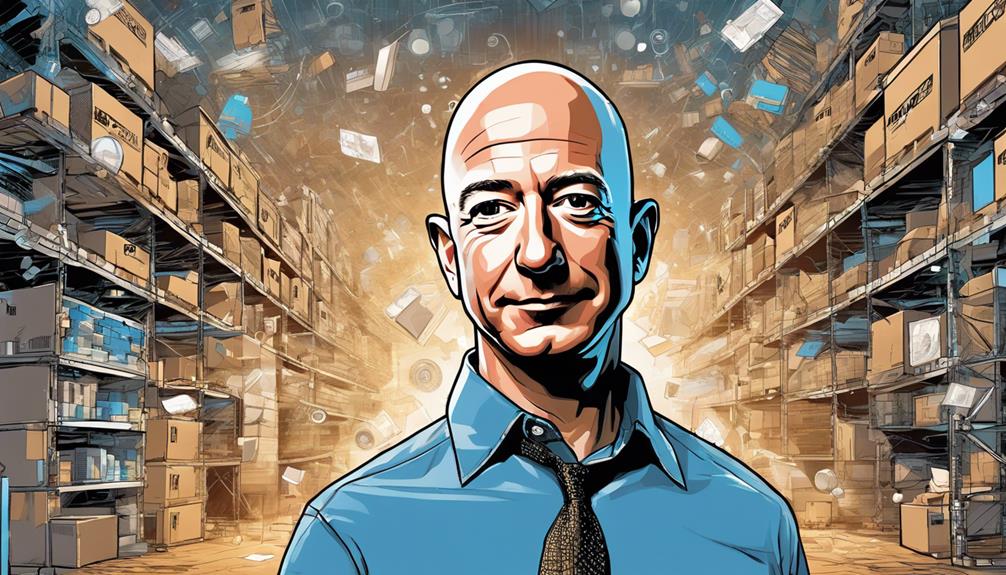Mastering the art of multitasking in business is your ultimate key to skyrocketing productivity. Start by outsourcing tasks to specialists, allowing you to focus on core activities. Leverage tools like project management software and CRM systems to streamline operations. Create a dynamic brainstorming environment with your team, facilitating idea exchange and innovation. Utilize data analytics to gain insights into customer preferences and adapt your strategies accordingly. Finally, invest in building a skilled workforce that aligns with your mission. Discover more strategies to enhance your multitasking skills and transform your business effectiveness. By implementing these strategies, you can improve productivity at work and achieve higher overall efficiency. Additionally, prioritize tasks based on deadlines and importance, and delegate effectively to ensure that all responsibilities are managed effectively. By mastering the art of multitasking and implementing these strategies, you can propel your business to new levels of success and profitability.
Key Takeaways
- Prioritize core business functions by outsourcing non-essential tasks to specialists, increasing efficiency and focus on strategic initiatives.
- Utilize project management tools to streamline task organization and ensure clear communication among team members for effective collaboration.
- Foster a culture of open dialogue and creativity through regular brainstorming sessions, allowing diverse ideas to flourish and enhance problem-solving.
- Leverage data analytics to inform multitasking decisions, ensuring that efforts align with customer preferences and market trends for better outcomes.
Benefits of Outsourcing Tasks
Outsourcing tasks lets you focus on what really matters in your business while experts handle the details. By entrusting specialists with functions like SEO and website design, you enhance your online presence without getting bogged down.
Virtual assistants can take care of your social media and email communications, freeing up your time to strategize and innovate. When you hire professionals for accounting and legal matters, you save valuable hours that can be redirected toward growth.
Delegating responsibilities not only alleviates your workload but also boosts overall productivity, allowing you to concentrate on your core activities. Ultimately, outsourcing equips you with the flexibility to adapt and thrive in a competitive business landscape.
Strategies for Effective Brainstorming

To spark creativity and drive innovation, set aside dedicated time each week for brainstorming sessions that encourage open dialogue and idea sharing among your team. Create an environment where everyone feels comfortable expressing their thoughts without judgment. Use techniques like mind mapping or the “6-3-5” method to generate a wealth of ideas.
Here's a simple table to help structure your brainstorming sessions:
| Strategy | Description |
|---|---|
| Mind Mapping | Visualize ideas and connections |
| 6-3-5 Method | Six participants, three ideas each, five minutes |
| Round Robin | Each person builds on the previous idea |
| Silent Brainstorming | Write ideas silently before sharing |
| Role Storming | Assume different roles to inspire new ideas |
Implement these strategies to release your team's full creative potential!
Leveraging Data for Insights

Data is your most powerful ally in uncovering valuable insights that drive informed business decisions. By utilizing data analytics, you can identify which products resonate with your customers and what their needs are.
Implementing a Customer Relationship Management (CRM) system helps you track sales patterns and service issues efficiently. This approach minimizes guesswork and enhances your marketing effectiveness.
Regularly analyzing customer interactions allows you to pinpoint trends, enabling you to adjust strategies proactively. As you leverage data for insights, you'll find yourself making decisions rooted in evidence rather than intuition.
This not only boosts your confidence but also positions your business for sustained growth and adaptability in a competitive landscape. Embrace data, and watch your business thrive.
Building a Skilled Workforce

Building a skilled workforce is key to leveraging insights gained from data analytics, as the right talent can turn information into actionable strategies. To build this workforce, focus on hiring individuals with specific expertise that aligns with your business goals. Consider the following attributes when selecting your team:
| Attribute | Importance |
|---|---|
| Technical Skills | Essential for specific tasks |
| Communication Skills | Enhances teamwork and clarity |
| Adaptability | Necessary for evolving challenges |
| Problem-Solving | Critical for overcoming hurdles |
| Cultural Fit | Guarantees alignment with company values |
Essential Tools for Management

Effective management hinges on utilizing the right tools that streamline processes and enhance productivity across your business operations.
Start with project management software like Trello or Asana to keep your tasks organized and deadlines clear.
Customer Relationship Management (CRM) systems, such as Salesforce, help you track interactions and manage leads efficiently.
For communication, tools like Slack or Microsoft Teams can facilitate seamless collaboration among team members.
Don't forget about financial management tools like QuickBooks to simplify accounting tasks.
Additionally, harnessing data analytics platforms enables you to make informed decisions based on customer insights.
Conclusion
Mastering the art of multitasking isn't just about doing more; it's about doing what matters most.
By outsourcing routine tasks, you free up time for innovative brainstorming, allowing creativity to flourish alongside efficiency.
As you leverage data-driven insights, you're not just reacting to trends; you're anticipating them.
Your skilled workforce becomes a powerful ally, transforming challenges into opportunities.
Embrace this balance, and watch your business thrive—where the chaos of multitasking meets the clarity of focused intention.









